Saltburn Gill mine water treatment scheme
Saltburn Gill mine water treatment scheme removes more than 98% of iron from local waterways in East Cleveland, England.
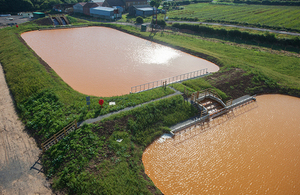
Saltburn mine water treatment scheme.
Saltburn Gill is a narrow stream in a wooded valley in the area of East Cleveland, England. In 1999 a large, iron-rich mine water outbreak occurred which polluted Saltburn Gill and Skelton Beck, as well as discolouring a popular surfing beach.
Although not harmful to people, it smothered the stream bed with ochre, making it hard for fish and river insects to survive, as well as affecting the bathing water quality.
Following initial work by the Environment Agency (EA) and local residents, through the Saltburn Gill Action Group, the Mining Remediation Authority was invited to help develop a passive mine water treatment scheme, which uses natural methods to remove the iron contamination before it is discharged as clean water into the Saltburn Gill.
Before this treatment scheme was built – as part of the Department for Environment, Food and Rural Affairs (Defra) funded Water and Abandoned Metal Mines programme – the mine water caused more than 100 tonnes of iron to enter the North Sea each year.
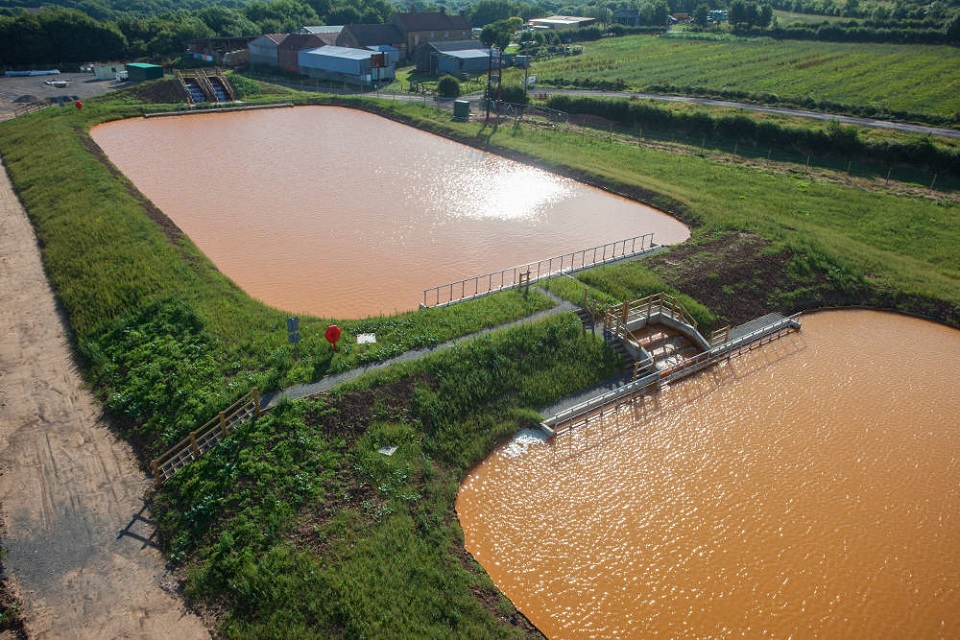
Aerial view of Saltburn mine water treatment scheme before completion.
Construction phases
Phase 1 works included the construction of two lagoons with cascades and a drying bed for ochre sludge.
Mine water is pumped to the top of the aeration cascades, where it flows down into the lagoons. Over a period of 1 to 2 days, the majority of the dissolved iron precipitates and settles.
This resulting ochre sludge is collected from the bottom of the lagoons and placed into the drying bed.
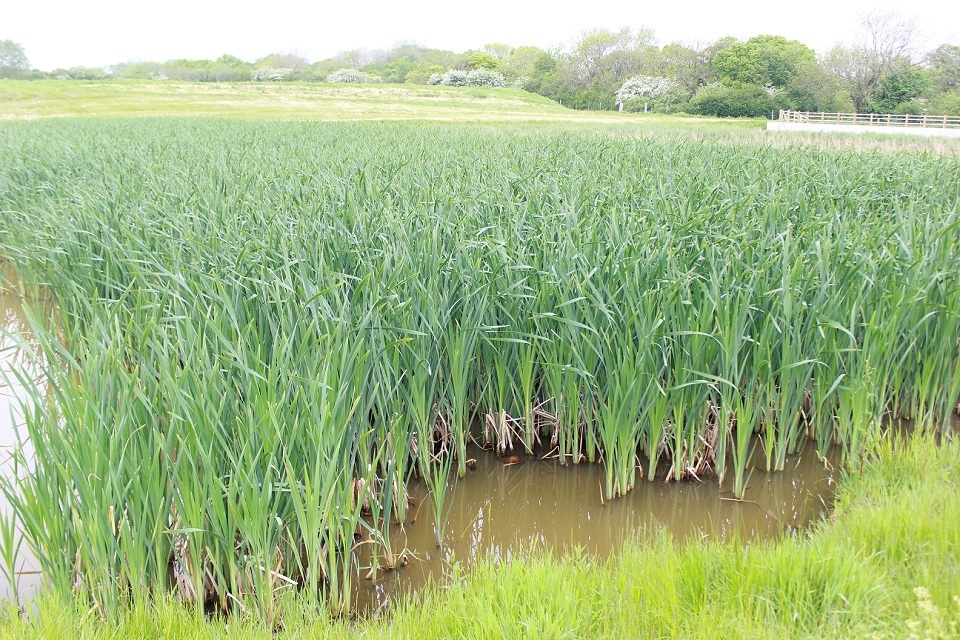
Reed beds at Saltburn mine water treatment scheme.
We monitored the results from Phase 1, which showed the infrastructures were efficiently reducing the iron concentration between the raw mine water and the treated discharge by approximately 94%.
We used this information to assist with the design of Phase 2 works, which included the addition of two more lagoons and a polishing reed bed to filter out any remaining iron.
Phase 2 successfully reduces the iron concentration between the raw mine water and the treated discharge by more than 98%.
The scheme was finally completed in August 2015.

The solar array at the Saltburn mine water treatment scheme.
To help reduce the costs of pumping the mine water at Saltburn, a solar panel scheme was considered one of the most appropriate ways to offset the demand for electricity and minimise climate change impact.
This went live in July 2019 and its 101kw array is projected to save £11,400 of electricity costs every year, against an expected spend of £24,000.
History
The area of East Cleveland in England has seen large-scale deep mining for more than 100 years.
When local ironstone mining operations stopped in the 1960s, the pumps which kept them dry were turned off and removed. The workings subsequently flooded and iron-rich mine water eventually reached ground surface level.
The large outbreak of 1999 quickly turned the stream bright orange and a large ochre plume was occasionally formed as this water joined the Skelton Beck in Saltburn, and flowed into the North Sea.
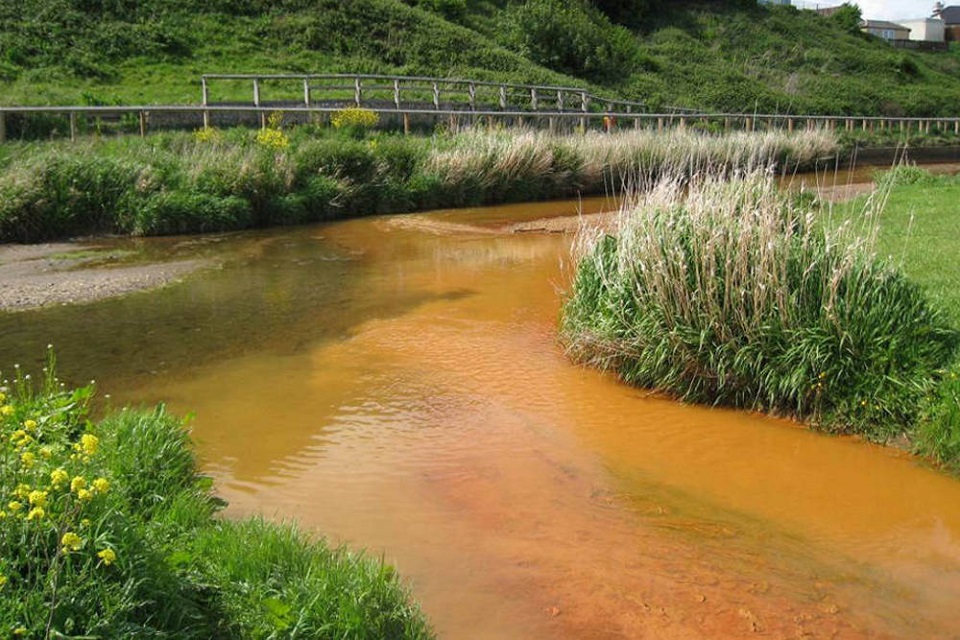
Discolouration of water at Saltburn Gill and Skelton Beck before the treatment scheme was in place.
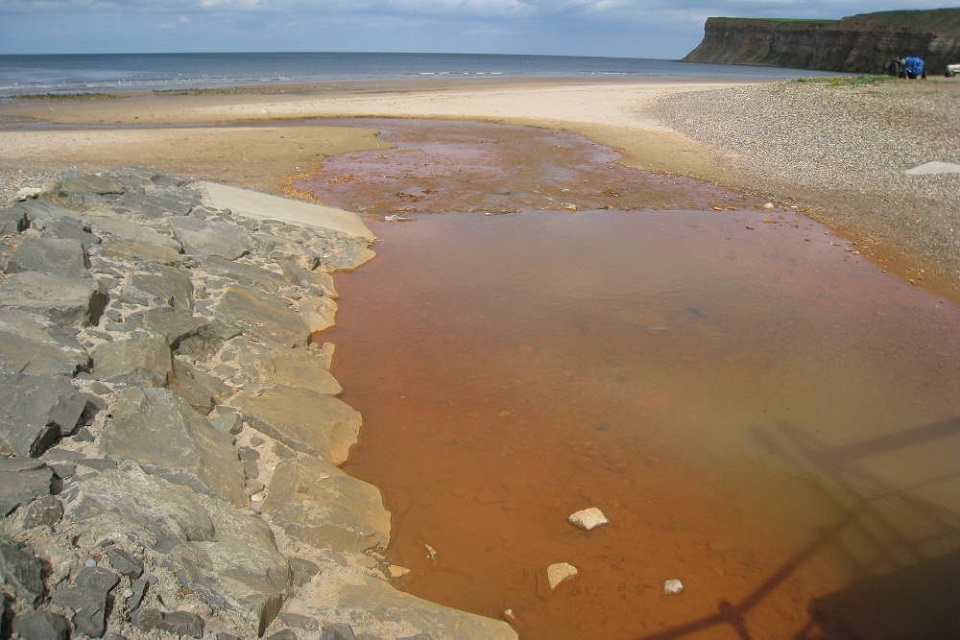
Discolouration on Saltburn beach before the treatment scheme was put in place.
Saltburn Gill Action Group was established by the local community to raise the profile of the problem and it worked with the EA to secure funding from Defra to clean up the pollution.
We then worked with the action group and other stakeholders to develop the treatment scheme.
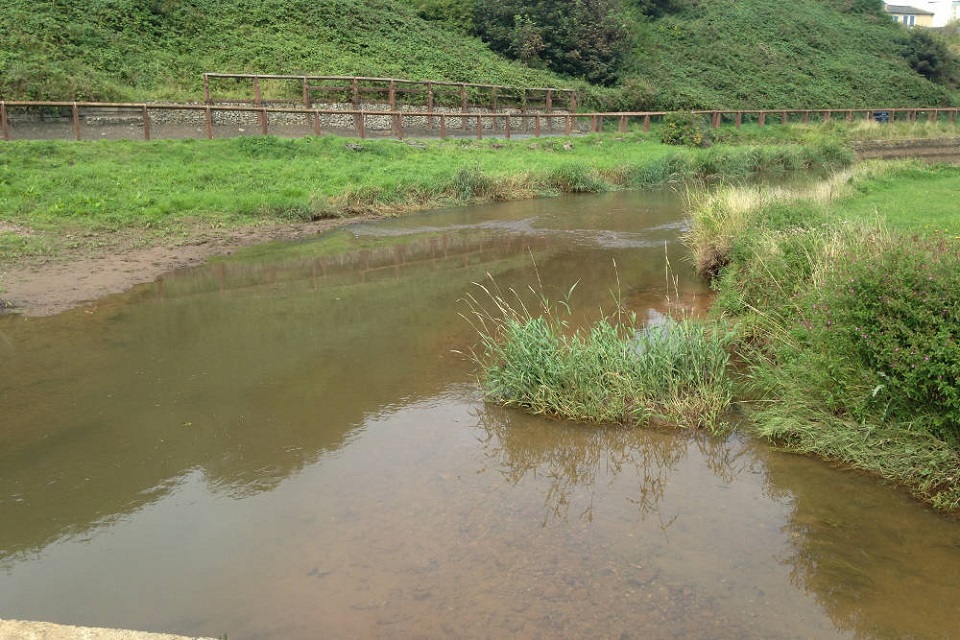
Clear water at Saltburn Gill and Skelton Beck now the treatment scheme is in place.
We have calculated that the total monetary benefit from preventing the discharge and treating the mine water is £10.5 million over 25 years.